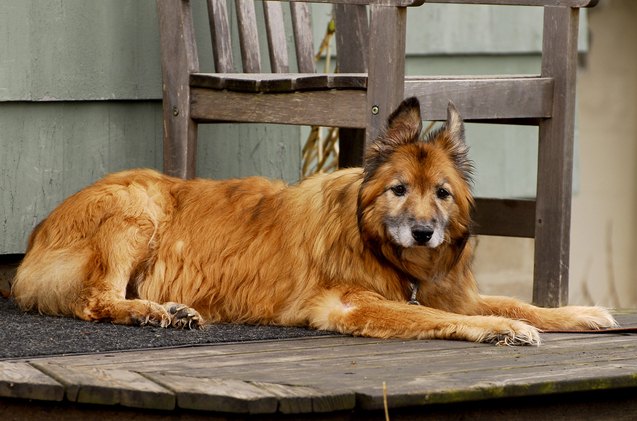Talking About Palliative Care For Older Dogs

Nothing is more heartbreaking than seeing your beloved dog in pain. As a pet parent, you want to do everything you can to help your dog get better when he is sick. At a certain point, however, you must come to terms with the fact that there may be nothing more you can do except make your dog’s final months, weeks or days as comfortable as possible. Let’s go over the basics about what palliative care is, in which situations it might be needed and how to go about creating a palliative care plan for older dogs.
What is Palliative Care?
Palliative care is defined as the type of care that is given to a dog as it approaches the end of its life either by old age or illness. Though palliative care is often given after the decision has been made to stop (or to not pursue) a curative therapy for disease (such as cancer), it can also be applied to older dogs that are naturally approaching the end of their days. The goal of palliative care is to make your dog’s final days as comfortable and enjoyable as possible, primarily through the use of pain management medications and techniques.
Related: Beautiful Photos Of Old Dogs
Cancer is a top killer of dogs and it is particularly common as dogs get older. Unfortunately, cancer treatments for older dogs can be ineffective and, in many cases, simply cause the dog greater suffering. In the event that your dog is diagnosed with cancer or another life-limiting disease, you may choose to opt for palliative care. Rather than subjecting your dog to painful treatments, you might instead focus on managing his pain to give your dog as great a degree of normalcy as possible during his last days. Other methods of palliative care may include massage and physical therapy.
Creating a Palliative Care Plan
In creating a palliative care plan for your dog, you are simply establishing goals for the management of your dog’s pain and making a plan to make him as comfortable as possible as he progresses toward the end of his life. In order to create this plan you must have a good understanding of your dog’s condition. Talk to your veterinarian about the course your dog’s disease is likely to take and how it might affect his life – this is especially important because maintaining your dog’s quality of life is an essential part of good palliative care.
Related: 5 Health Tips For Senior Dogs
Once you have cultivated an understanding of your dog’s condition and have set goals for making him as comfortable as possible, you can begin to take steps to provide palliative care. In addition to arranging for necessary treatments and pain medications, you can also make things easier for your dog by modifying your home to maximize his mobility. Add nonskid floor surfaces to the places where your dog is likely to slip and block his access to stairs so he doesn’t injure himself. Raise your dog’s food and water bowls so he can eat and drink without straining his back or bring the food and water bowls to him while he is resting.
Watching your beloved pet approach the end of his days is not an easy thing to do. As your dog’s caregiver and friend, however, it is your job to be there for him and to provide him with the care he needs to make his journey as comfortable as possible. By understanding the course of your dog’s condition and by making simply adjustments, you can ensure that your dog’s final days are spend in as normal a way as possible.

Kate Barrington is the loving owner of two cats (Bagel and Munchkin) and a noisy herd of guinea pigs. Having grown up with golden retrievers, Kate has a great deal of experience with dogs but labels herself a lover of all pets. Having received a Bachelor's degree in English, Kate has combined her love for pets and her passion for writing to create her own freelance writing business, specializing in the pet niche.
More by Kate Barrington























